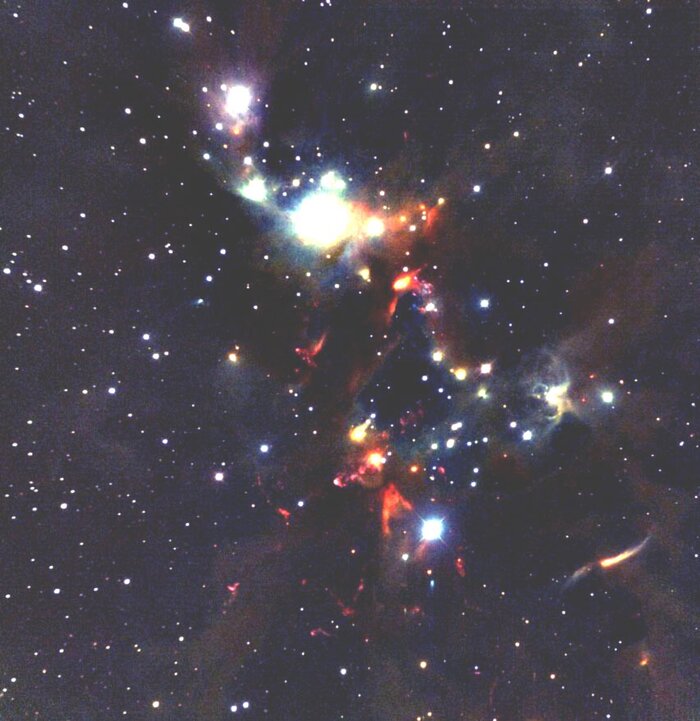The NGC 1333 cluster
The NGC1333 cluster in the constellation Perseus is embedded deeply in the Perseus giant molecular cloud, at a distance of 1,000 light-years from Earth. It is the home to several hundred young and forming stars with ages less than about one million years. The cold molecular gas in he cloud collapses under the pull of gravity to form the new stars. Prominent in this infrared image are outflows of gas being driven by the forming stars, and shocks where these outflows strike the cold molecular material in the surrounding cloud. This image was obtained with the University of Florida’s near-infrared camera and multi-object spectrometer named FLAMINGOS, using the National Science Foundation’s 2.1-meter telescope at Kitt Peak National Observatory near Tucson AZ. The three colors in the image correspond to near-infrared wavelengths: red (2.2 microns), green (1.6 microns), and blue (1.3 microns).
Credit:University of Florida and NOIRLab/NSF/AURA
About the Image
| Id: | noao0308a |
| Type: | Observation |
| Release date: | May 26, 2003 |
| Related releases: | noao0308 |
| Related announcements: | noaoann03009 |
| Size: | 1900 x 1956 px |
About the Object
| Name: | NGC 1333 |
| Constellation: | Perseus |
| Category: | Star Clusters |
Wallpapers
Coordinates
| Position (RA): | 3 29 21.63 |
| Position (Dec): | 31° 10' 52.48" |
| Field of view: | 17.21 x 17.84 arcminutes |
| Orientation: | North is 0.2° right of vertical |
Colors & filters
| Band | Wave-length | Tele-scope |
|---|---|---|
| Infrared | 1.3 μm | KPNO 2.1-meter Telescope FLAMINGOS |
| Infrared | 1.6 μm | KPNO 2.1-meter Telescope FLAMINGOS |
| Infrared | 2.2 μm | KPNO 2.1-meter Telescope FLAMINGOS |

